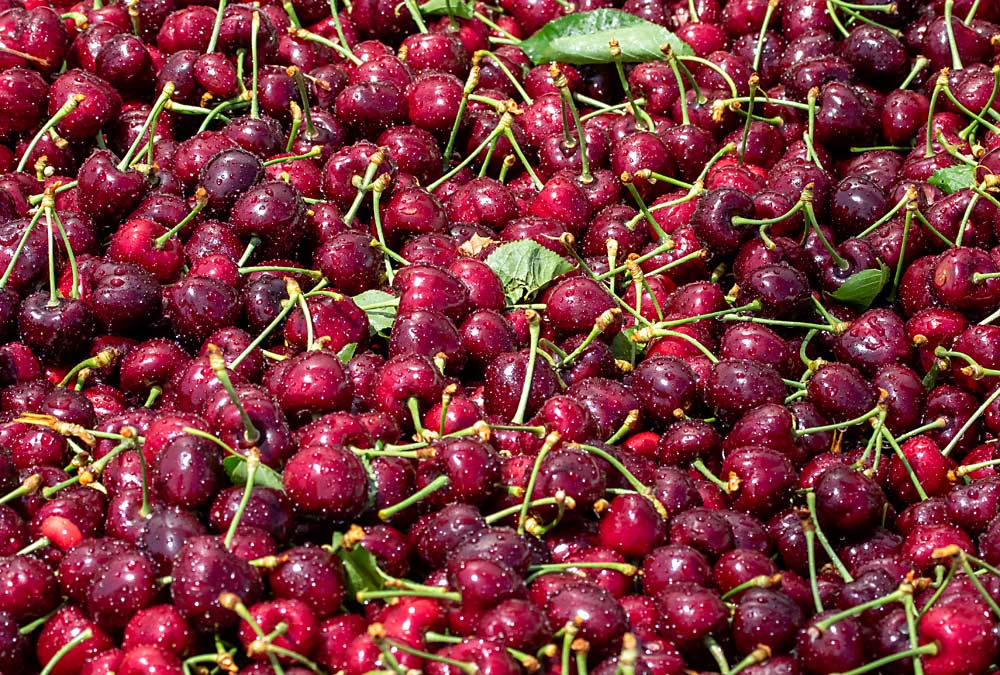
Northwest cherry growers have shipped about 12 million boxes of an expected 19-million-box crop so far this season in a challenging cherry market.
“We’ve got fruit coming off in Omak, in Wenatchee and in the Yakima Valley, and it’s been a real challenge,” said B.J. Thurlby, president of Northwest Cherry Growers. Marketing such a compressed crop is difficult.
In April, the region experienced a flash bloom that severely compressed the crop, affecting the normal spread driven by geography and cultivar.
Many growers report leaving some blocks unpicked due to either low prices or lack of packing capacity.
“We’re shipping 500,000 boxes a day,” Thurlby said, which represents the industry’s peak sustained capacity — though growers could be picking closer to 1 million boxes per day. “The system can’t hold any more than that.”
Northwest-grown cherries currently dominate the market, but the first half of the season faced record-setting overlap with the large and late California cherry crop.
“The market has been loaded with both California and Washington cherries this season, with California’s crop overlapping with ours by 3.1 million boxes,” said Joel Hewitt, domestic sales manager for CMI Orchards, based in Wenatchee, Washington.
The compressed 2023 crop — estimated as high as 21 million boxes in the early season — stands in stark contrast to last season’s 13-million-box crop, which pushed up domestic prices and limited exports. Advertised prices around $2.99 per pound are common now as retailers try to move more fruit, Thurlby said, while last year fruit was closer to $5 per pound.
On the export side, demand has been strong this season, Thurlby said, with about 34 percent of the crop exported as of mid-July.
Northwest Cherries, which represents growers from Washington, Oregon, Idaho, Utah and Montana, expects the season to run through the end of August, although with less August volume than initially expected.
For consumers, the industry is delivering high-quality fruit at a great value, Thurlby said.
The quality should continue — and inspire repeat purchase — through the rest of the season, Hewitt said.
“The quality of the fruit this year has been fantastic, and a great eating experience for our customers,” Hewitt said. “We couldn’t have asked for better flavor this season.”
—by Kate Prengaman






Leave A Comment